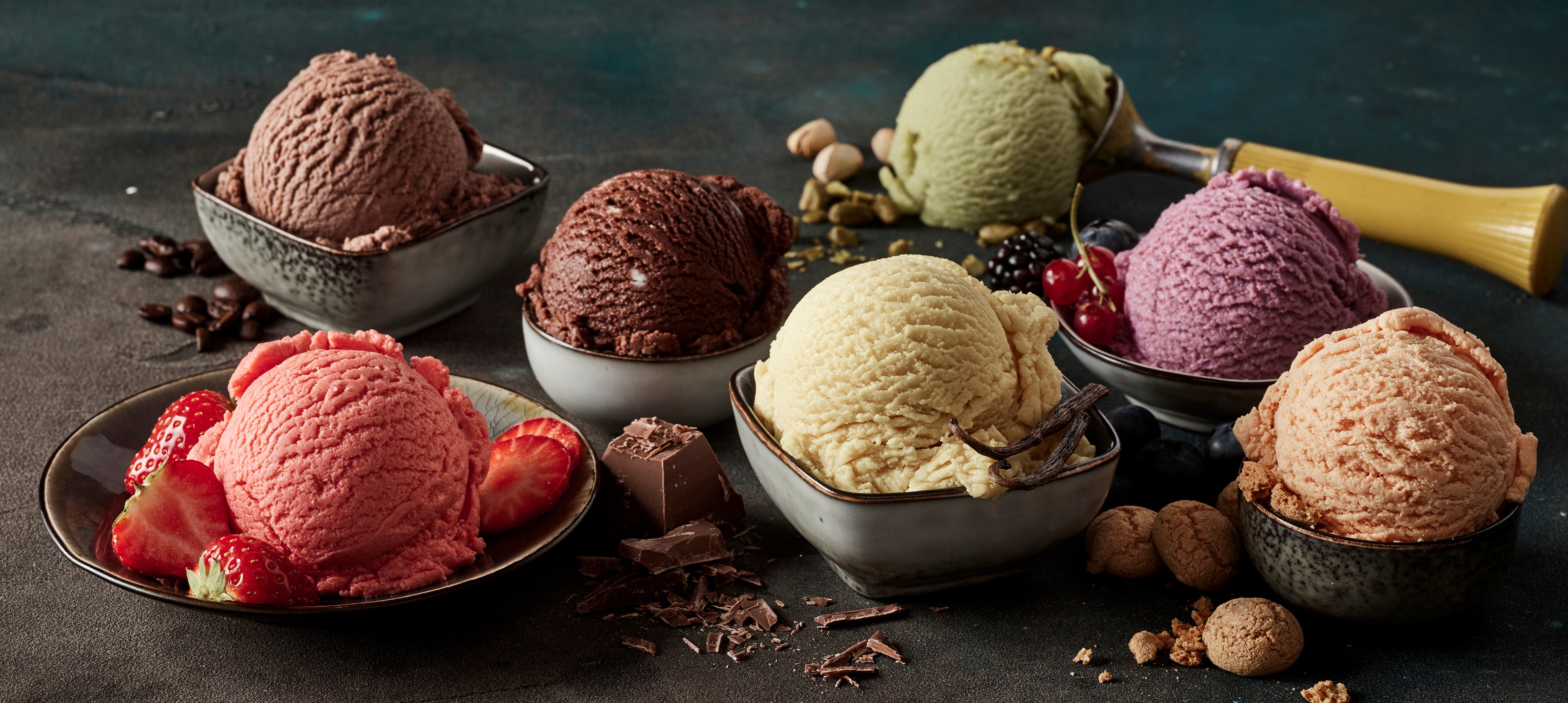Differences between Gelato and traditional ice cream

Gelato vs. Ice Cream: What's the Real Difference?
Gelato and ice cream are two of the world's most beloved frozen desserts. While they seem similar, they share only three basic ingredients: dairy, sugar, and air. However, the real difference lies in the proportions of these ingredients and the unique process used to make each one. In this guide, we'll explain the key distinctions that give each treat its unique character.
The 3 Main Differences Explained
The unique qualities of gelato and ice cream come down to three key factors:
- 1. Fat Content: Traditional ice cream has a higher cream content. In fact, U.S. FDA standards require at least 10% milkfat. Gelato, on the other hand, uses much more whole milk and less cream. Consequently, its fat content is significantly lower, often around 4-8%.
- 2. Air Content (Overrun): Ice cream is churned at a very high speed. This process incorporates a large amount of air, sometimes up to 50% of the total volume (this is called overrun). The Gelato churning process is much more slowly. This results in far less air (about 25-30% overrun), making the final product much denser.
- 3. Serving Temperature: Ice cream is typically served at a very cold -12°C (10°F). Serving gelato temperature is much warmer, around -7°C (20°F). This warmer temperature is important because it means your tongue isn't as numb from the cold, which allows you to experience the gelato's flavor more intensely.
At a Glance: Gelato vs. Ice Cream
| Feature | Gelato | Ice Cream |
|---|---|---|
| Main Dairy | More Milk, Less Cream | More Cream, Less Milk |
| Fat Content | Lower (4-8%) | Higher (10%+) |
| Air (Overrun) | Low (25-30%) | High (50%+) |
| Serving Temp. | Warmer (~ -7°C / 20°F) | Colder (~ -12°C / 10°F) |
| Texture | Dense, silky, soft | Light, airy, hard-frozen |
| Flavor | Intense and concentrated | Rich and creamy |
A Note on Process & Ingredients
The differences also extend to the equipment and additives used. For instance:
- Equipment: Tipically a batch freezer chruns the Gelato very slowly to minimize air. In contrast, commercial ice cream is often made in a larger, continuous freezer that whips much more air into the mix.
- Stabilizers: Because of its higher water content, ice cream often includes stabilizers, like guar gum, to prevent the formation of large ice crystals. Traditional gelato recipes, however, typically do not rely on these.
So, Which One Should You Choose?
Ultimately, there is no wrong answer! Both gelato and ice cream are delicious frozen treats. If you prefer a denser, silkier texture with a bold and intense flavor, gelato is likely your perfect match. On the other hand, if you crave a lighter, airier, and richer creamy experience, then classic ice cream is the way to go.
AussieBlends: The Perfect Base for Both
Whether you prefer the dense richness of gelato or the creamy texture of classic ice cream, AussieBlends has you covered. Our product line includes a variety of professional mixes. For example, our Premium Ice Cream Mix can be used to make both styles, and we also offer a wide range of dedicated Gelato Mixes and Flavorings. Therefore, you can unleash your creativity with a consistent, high-quality base every time.

